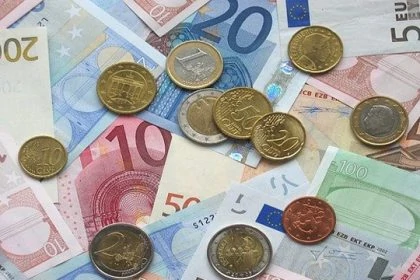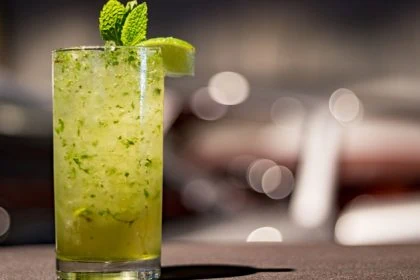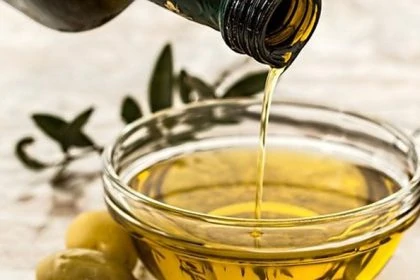Trade mark protection for a cup as a 3D mark for glassware, vessels and beverages was refused by the EUIPO: the 3D mark consisted of the appearance of the product itself, but was not unusual. Was this rightly decided, even though the cup has a special heart-shaped “floating” inner wall?
Glass cup with heart-shaped inner wall

The mark in dispute is a three-dimensional representation of a glass double-walled cup with a handle, the “floating” inner wall of which is heart-shaped.
The Board of Appeal of the EUIPO had refused protection for this cup, which was to be protected as a European 3D trade mark: the 3D trade mark applied for merged with the goods claimed, it was the appearance of the goods themselves.
For trade marks which merge with the claimed goods, however, particularly high requirements apply for the determination of their distinctive character. Such marks only have original distinctiveness if they deviate significantly from the norm – and that was not the case here, the Board of Appeal decided.
The trade mark applicant appealed against this decision before the European Court of Justice (CFI). On the one hand, he stressed that the shape in question was unique, as its “floating” heart-shaped inner wall was “magical”.
In addition, he contested that the glass cup with a handle, which he had applied for as a 3D trade mark, could be counted as an amalgamation for the packaging of the drinks and as an appearance of the product itself. Most importantly, he argued that a large part of the goods he claimed were not glass cups at all, but instead were jugs, pitchers and containers for beverages. He had also claimed protection for the beverages themselves, including coffee, tea, tea leaves and soft drinks in Nice Classes 30 and 32.
But his claim was rejected in its entirety.
Glassware: Merging with the goods themselves
The goods claimed in Class 21 are glassware and vessels for the home, primarily used for drinking, the CFI said. Therefore, in view of the fact that the mark applied for consists of the shape of a transparent drinking vessel, the Board of Appeal was right to consider that the mark applied for in respect of the goods in Nice Class 21 was a three-dimensional mark consisting of the appearance of the goods themselves and, accordingly, to consider whether that mark departed significantly from the norm or customs of the sector.
Appearance of the goods themselves – great variety of shapes
Heart-shaped drinking vessels, however, are common in the industry, and the heart shape is frequently used for cups and glasses. The market for glasses and cups is also characterised by a great variety of shapes, the CFI found. This finding is relevant: because it is obvious that if there is a large variety of shapes, it is more difficult to prove that one is deviating from the norm of the industry.
In any case, in the present case, the CFI ruled that the 3D mark applied for did not deviate from the norm. Double-walled glasses and cups are also offered by other manufacturers on the market, typically serving functional aspects, such as the insulating effect to keep drinks hot longer. However, aesthetic aspects always play a role as well, the CFI emphasised, as the Board of Appeal had also found. The applicant was therefore wrong to claim that the Board of Appeal had – incorrectly – decided that the shape of the mark applied for was exclusively technical, the CFI ruled.
In any case, the relevant public is used to finding double-walled drinking vessels on the market with all kinds of variations and designs of “floating” inner walls, the CFI summarised.
Form of presentation of the goods
The case was different for the claimed goods in classes 30 and 32, because these are foodstuffs and beverages for everyday consumption, the CFI found. For these goods, however, the Board of Appeal had not even assumed that they would merge with the shape. Rather, the contested decision had stated that the 3D mark applied for consisted of the shape of the presentation of these goods. And this finding was entirely correct, the CFI ruled.
The “floating” heart-shaped inner wall would therefore probably not be seen as an indication of the commercial origin of the claimed goods, the court explained, but rather as an attractive presentation of the shape intended to evoke positive feelings. In the present case, there was no possibility that the relevant public would attribute to the mark applied for any meaning beyond the decorative, emotional or laudatory effect of the ‘floating’ heart shape as an indication of the commercial origin of the goods in question.
The applicant argued in vain that the Board of Appeal had not produced any evidence that there are cup or glass shapes on the market which are identical to the shape applied for. This circumstance was not in itself sufficient for a finding that this shape deviated significantly from the norm and customary in the sector and therefore had distinctive character, the CFI emphasised.
Would you also like to protect a mark or packaging?
Are you also active in the food and beverage sector and would like to protect your packaging?
Or do you need general advice on whether it makes more sense to apply for a figurative mark, a 3D mark or a position mark?
Our patent attorneys and attorneys-at-law are experienced and highly qualified in all fields of intellectual property law, both nationally and internationally.

Sources for text and image:
Judgement of CFI, ‘cup 3D mark – Merging with the goods







Leave a Reply